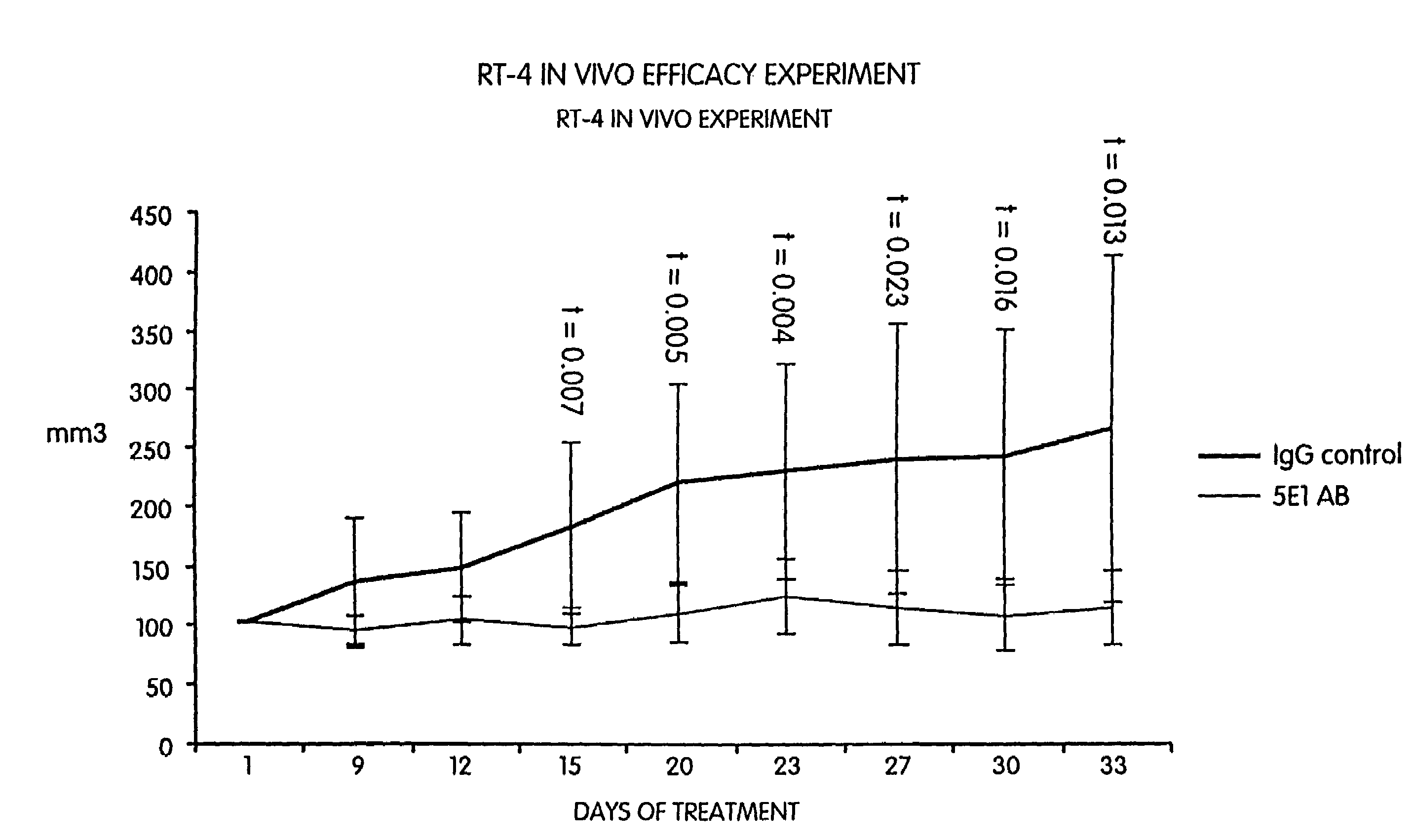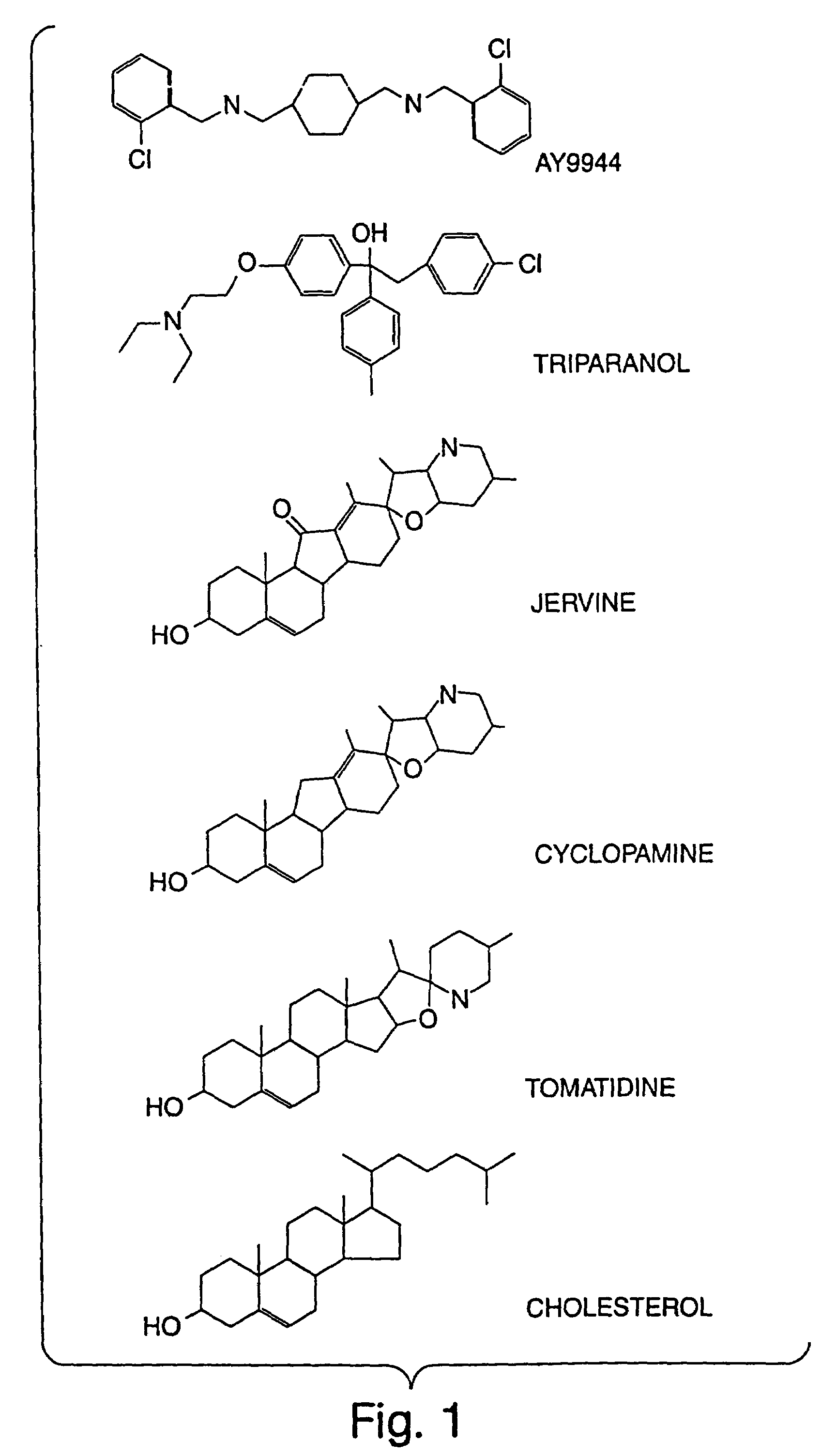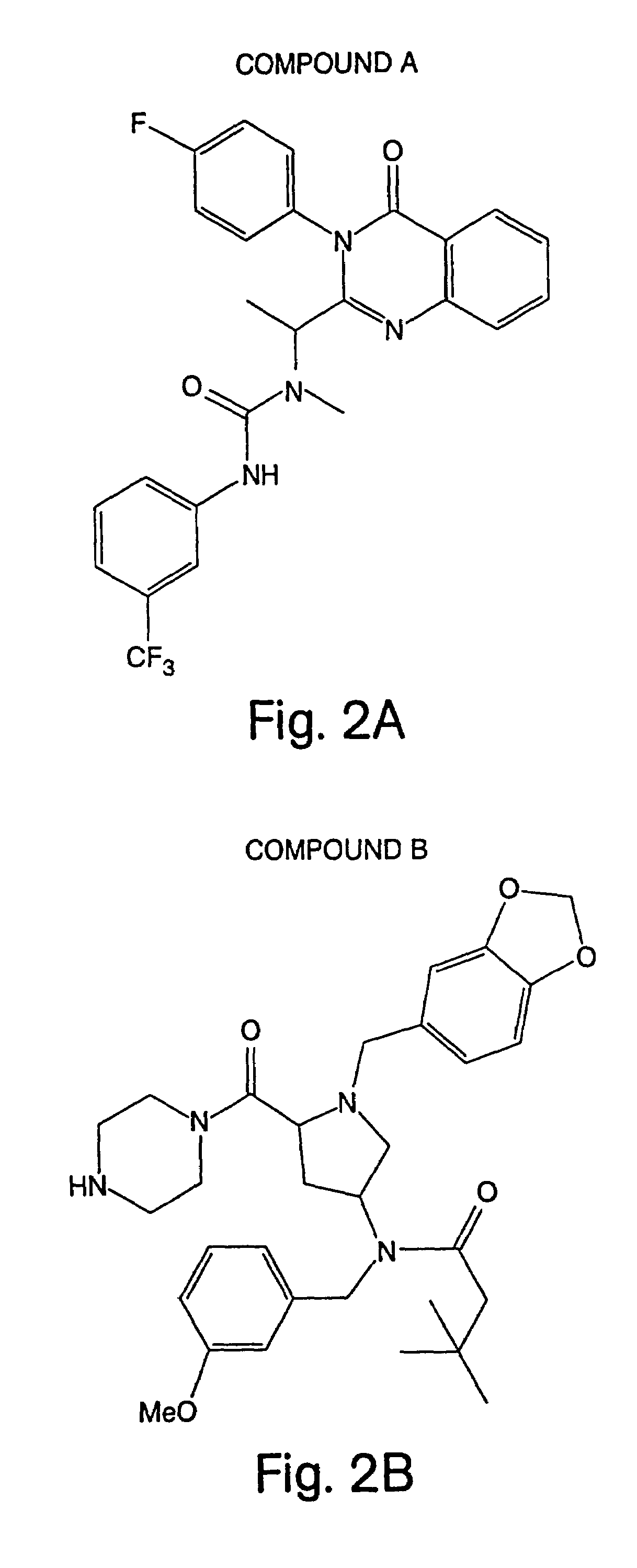Methods of inhibiting unwanted cell proliferation using hedgehog antagonists
a technology of unwanted cell proliferation and hedgehog, which is applied in the direction of antibody medical ingredients, peptide sources, instruments, etc., can solve the problems of unsatisfactory proliferation, growth, differentiation and achieve the effect of decreasing unwanted growth, proliferation, or survival of cells
- Summary
- Abstract
- Description
- Claims
- Application Information
AI Technical Summary
Benefits of technology
Problems solved by technology
Method used
Image
Examples
example 1
Hedgehog, Lung Development and Surfactant Production
[0750]Respiratory distress syndrome results from insufficient surfactant in the alveolae of the lungs. The lungs of vertebrates contain surfactant, a complex mixture of lipids and protein that causes surface tension to rise during lung inflation and decrease during lung deflation. During lung deflation, surfactant decreases such that there are no surface forces that would otherwise promote alveolar collapse. Aerated alveoli that have not collapsed during expiration permit continuous oxygen and carbon dioxide transport between blood and alveolar gas and require much less force to inflate during the subsequent inspiration. During inflation, lung surfactant increases surface tension as the alveolar surface area increases. A rising surface tension in expanding alveoli opposes over-inflation in those airspaces and tends to divert inspired air to less well-aerated alveoli, thereby facilitating even lung aeration.
[0751]Respiratory distres...
example 2
Gli-1 Expression in Human Tumors
Hedgehog Pathway Activation in Human Tumors
[0765]Hedgehog signaling plays a causative role in the generation of basal cell carcinoma (BCC). Hedgehog signaling was analyzed to determine whether this pathway is active in other human tumors, more specifically prostate, lung and breast cancer, as well as benign prostate hyperplasia. Hedgehog proteins are known proliferative agents for a variety of cell types. Since hedgehogs have a known proliferative effect on a variety of cell types, hedgehog antagonists may be valuable therapeutics for cancers in which high level hedgehog signaling is present.
[0766]The question of hedgehog activation in the tumor types was addressed by conducting radioactive in situ hybridization experiments with gli-1, a known transcriptional effector gene of hedgehog signaling.
[0767]Briefly, sections of paraformaldehyde-fixed, paraffin-embedded tissue were cleared, re-hydrated, digested with proteinase K, acetylated and hybridized wi...
example 3
Steroidal Hedgehog Antagonists
[0774]Studies were performed to determine the site in the hedgehog signaling pathway at which cyclopamine (an alkaloid steroidal hedgehog antagonist) operates, and therefore better understand the spectrum of tumors caused by Shh pathway-activating lesions that could potentially be treated with this compound. These studies are presented in greater detail in U.S. patent application Beachy et al. entitled “Hedgehog signaling pathways, compositions and uses related thereto” filed Oct. 10, 2000, the contents of which are herein incorporated by reference.
[0775]These studies involve the use of mouse embryonic fibroblasts (MEFs) that were generated by trypsin digestion of E8.5 embryos from patched (ptc) + / − matings. The mouse ptc gene was disrupted by homologous recombination in which part of exon 1 and all of exon 2 were replaced with the bacterial lacZ gene (Goodrich et al, (1997) Science 277:1109). As Ptc protein suppresses Shh signaling, a loss of its funct...
PUM
 Login to View More
Login to View More Abstract
Description
Claims
Application Information
 Login to View More
Login to View More - R&D
- Intellectual Property
- Life Sciences
- Materials
- Tech Scout
- Unparalleled Data Quality
- Higher Quality Content
- 60% Fewer Hallucinations
Browse by: Latest US Patents, China's latest patents, Technical Efficacy Thesaurus, Application Domain, Technology Topic, Popular Technical Reports.
© 2025 PatSnap. All rights reserved.Legal|Privacy policy|Modern Slavery Act Transparency Statement|Sitemap|About US| Contact US: help@patsnap.com



